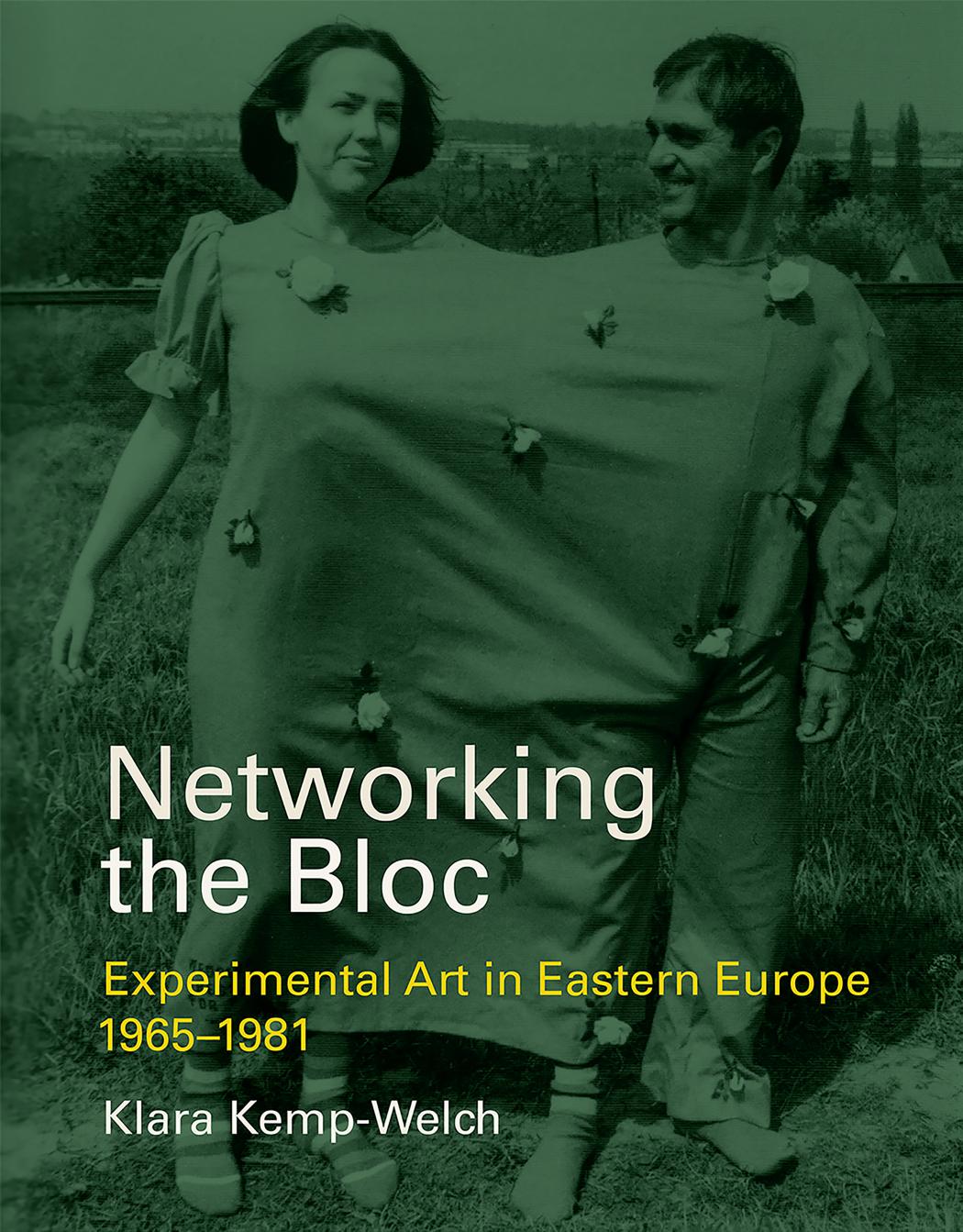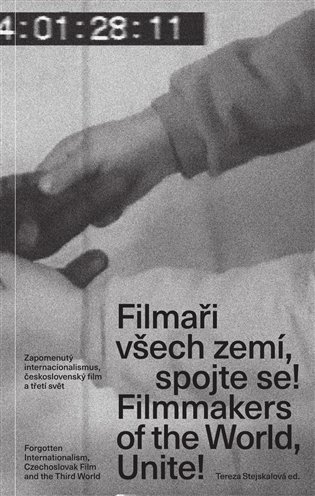Klara Kemp-Welch: Networking the Bloc: Experimental Art in Eastern Europe 1965-1981 (2019)
Filed under book | Tags: · 1960s, 1970s, art history, avant-garde, central europe, cold war, collaboration, community, conceptual art, documentation, east-central europe, eastern europe, experimental art, language, mail art, neo-avant-garde, networks, performance art

“Throughout the 1970s, a network of artists emerged to bridge the East-West divide, and the no less rigid divides between the countries of the Eastern bloc. Originating with a series of creative initiatives by artists, art historians, and critics and centered in places like Budapest, Poznań, and Prague, this experimental dialogue involved Western participation but is today largely forgotten in the West. In Networking the Bloc, Klara Kemp-Welch vividly recaptures this lost chapter of art history, documenting an elaborate web of artistic connectivity that came about through a series of personal encounters, pioneering dialogues, collaborative projects, and cultural exchanges. Countering the conventional Cold War narrative of Eastern bloc isolation, Kemp-Welch shows how artistic ideas were relayed among like-minded artists across ideological boundaries and national frontiers.
Much of the work created was collaborative, and personal encounters were at its heart. Drawing on archival documents and interviews with participants, Kemp-Welch focuses on the exchanges and projects themselves rather than the personalities involved. Each of the projects she examines relied for its realization on a network of contributors. She looks first at the mobilization of the network, from 1964 to 1972, exploring five pioneering cases: a friendship between a Slovak artist and a French critic, an artistic credo, an exhibition, a conceptual proposition, and a book. She then charts a series of way stations for experimental art from the Soviet bloc between 1972 and 1976—points of distribution between studios, private homes, galleries, and certain cities. Finally, she investigates convergences—a succession of shared exhibitions and events in the second half of the 1970s in locations ranging from Prague to Milan to Moscow. Networking the Bloc, Kemp-Welch invites us to rethink the art of the late Cold War period from Eastern European perspectives.”
Publisher MIT Press, 2019
ISBN 9780262038300, 0262038307
xi+468 pages
Reviews: Cristian Nae (ARTMargins, 2019), Denisa Tomkova (H-Net, 2020), Henry Meyric Hughes (Critique d’art, 2020).
PDF (17 MB)
Comment (0)Tereza Stejskalová (ed.): Filmmakers of the World, Unite! Forgotten Internationalism, Czechoslovak Film and the Third World (2017) [Czech/English]
Filed under book | Tags: · cinema, cold war, czechoslovakia, film, film history, internationalism, postcolonialism

“The Algerian director Mohammed Lakhdar-Hamina (1934) and the recently deceased Syrian director Nabil Maleh (1936–2016) are considered founding fathers of their national cinematography and key figures in Arab cinematography. Due to their politically engaged and aesthetically unique work, they are also read and recognised on an international level. However, there is little acknowledgement of the fact that in the 1960s both studied at FAMU in Prague, a fact that definitely influenced their work. Other distinguished Asian and African directors who studied at FAMU include the Sri Lankan director Piyasiri Gunaratna (1939) and the Tunisian documentarist Hafed Bouassida (1947), as well as dozens of other directors, cameramen and scriptwriters from various countries in Asia, Africa and Latin America.
The bilingual publication includes interviews with some of the directors (Hafed Bouassida, Pyasiri Gunaratna) as well as studies on the work of Mohammed Lakhdar-Hamina (by Olivier Hadouchi) and Nabil Maleh (by Kay Dickinson). A more general cultural context is provided via an essay by the Czech researcher Daniela Hannová on Arab students in Czechoslovakia. Included is also a text by Alice Lovejoy mapping the trip of the Czech New Wave director František Vláčil to China.”
Publisher tranzit.cz, Prague, 2017
ISBN 9788087259412, 8087259416
237 pages
via editor
Review: Miroslav Libicher (25fps, 2018, CZ).
Interview with editor (audio, 10 min, Czech)
Book launch discussion (video, 84 min, English)
PDF (6 MB)
Comment (0)Fred Turner: The Democratic Surround: Multimedia and American Liberalism from World War II to the Psychedelic Sixties (2013)
Filed under book | Tags: · 1960s, cold war, counterculture, cultural history, liberalism, mass culture, underground

“We commonly think of the psychedelic sixties as an explosion of creative energy and freedom that arose in direct revolt against the social restraint and authoritarian hierarchy of the early Cold War years. Yet, as Fred Turner reveals in The Democratic Surround, the decades that brought us the Korean War and communist witch hunts also witnessed an extraordinary turn toward explicitly democratic, open, and inclusive ideas of communication and with them new, flexible models of social order. Surprisingly, he shows that it was this turn that brought us the revolutionary multimedia and wild-eyed individualism of the 1960s counterculture.
In this prequel to his book From Counterculture to Cyberculture, Turner rewrites the history of postwar America, showing how in the 1940s and ’50s American liberalism offered a far more radical social vision than we now remember. Turner tracks the influential mid-century entwining of Bauhaus aesthetics with American social science and psychology. From the Museum of Modern Art in New York to the New Bauhaus in Chicago and Black Mountain College in North Carolina, Turner shows how some of the most well-known artists and intellectuals of the forties developed new models of media, new theories of interpersonal and international collaboration, and new visions of an open, tolerant, and democratic self in direct contrast to the repression and conformity associated with the fascist and communist movements. He then shows how their work shaped some of the most significant media events of the Cold War, including Edward Steichen’s Family of Man exhibition, the multimedia performances of John Cage, and, ultimately, the psychedelic Be-Ins of the sixties. Turner demonstrates that by the end of the 1950s this vision of the democratic self and the media built to promote it would actually become part of the mainstream, even shaping American propaganda efforts in Europe.
Overturning common misconceptions of these transformational years, The Democratic Surround shows just how much the artistic and social radicalism of the sixties owed to the liberal ideals of Cold War America, a democratic vision that still underlies our hopes for digital media today.”
Publisher University of Chicago Press, 2013
ISBN 9780226325897, 022632589X
365 pages
Reviews: Jathan Sadowski (LA Review of Books, 2014), Carolyn L Kane (J Visual Culture, 2015), Matthew Linton (Society For U.S. Intellectual History Blog, 2015), Bernard Dionysius Geoghegan (Technology & Culture, 2015), Craig J. Pearison (J American History, 2016), Katie Simpson (J-History, 2017), Malte Hagener (NECSUS, 2015), Erika J. Pribanic-Smith (Journalism History, 2014), Debra Cash (ArtsFuse, 2014), Alex Sayf Cummings (2014).
Interview with author (Henry Jenkins, 2014), (cont.)
Interview with author (Clay Shirky, Public Books, 2014)
Video lecture (Berkeley, 2014)

